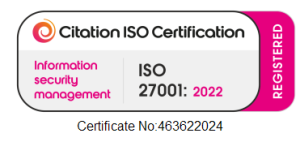Network installation services for schools, colleges and universities
Network installation services for schools, colleges and universities
A reliable and high-speed network infrastructure is essential for schools, colleges, and universities to support teaching, learning, and administrative functions. Here is a step-by-step guide to network installation services for educational institutions:
Assess the network requirements: Conduct a thorough assessment of the network requirements, including the number of users, devices, and applications that will be supported, as well as the physical layout of the campus. This will help determine the type and amount of network equipment and cabling required.
Plan the network topology: Based on the assessment, develop a network topology that includes the locations of switches, routers, wireless access points, and other network devices. Consider factors such as scalability, redundancy, and security in the planning process.
Choose the appropriate equipment: Select network equipment that meets the requirements of the network topology, such as switches with sufficient capacity and redundancy, routers with advanced features such as Quality of Service (QoS), and wireless access points that support the latest standards such as Wi-Fi 6. Also, consider using Power over Ethernet (PoE) switches to power wireless access points and other devices.
Install and configure the equipment: Install the network equipment and configure it according to the network topology plan. This includes configuring VLANs, security settings, and QoS to optimize network performance and security. Follow manufacturer guidelines and best practices to ensure proper installation and configuration.
Install the cabling: Install structured cabling systems, including copper and fiber optic cables, and follow industry standards for installation and testing. Be sure to label the cables and document the installation for future reference.
Install wireless access points: Install and configure wireless access points to provide high-speed wireless connectivity across the campus. Use tools such as site surveys to optimize placement and minimize interference.
Test the network: After installation, test the network to verify that it meets the requirements and operates as expected. Test network speed, coverage, and security, and troubleshoot any issues that arise.
Document the network: Document the network topology, equipment, and cabling installation for future reference. This includes creating network diagrams, labeling cables and devices, and maintaining an inventory of network equipment.
Maintain the network: Regularly inspect and maintain the network to ensure that it is free of damage, corrosion, or other issues that could affect performance. Perform regular software updates and security patches to maintain network security and performance.
In summary, network installation services for schools, colleges, and universities require careful planning, equipment selection, and installation to ensure a reliable and high-speed network infrastructure. By following best practices for installation and maintenance, educational institutions can support teaching, learning, and administrative functions with a robust and secure network.


